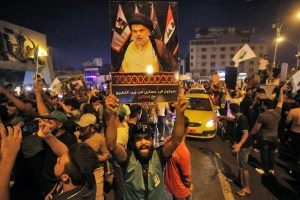
In late March, Iraq’s election law was once again reformed, continuing a pattern that occurs after nearly every election cycle. After the transition to a single non-transferable vote (SNTV) in 2021, the voting system has now reverted to a proportional representation (PR) model, which was previously used.
Voters are less than thrilled. Demonstrations have taken place across the country, based on the belief that it’s the voting system itself that has facilitated the formation of successive sectarian governments.
While there is some truth to this view, it’s not the whole story. Government formation in Iraq is based on the division of key positions and ministries between political factions – which is only partially based on the share of the vote. The voting system doesn’t impact this process. Rather, it’s the government formation process that is problematic.
Unfortunately, most voters don’t understand this. Since 2019, demonstrations challenging the formation process have become more frequent and more violent, with voters demanding that the government’s final make-up reflect the will of the people.
Partially in response to public anger, a new election law was adopted in 2021, setting aside a PR system (open lists with Sainte Laguë seat allocation) in favor of the SNTV – which operates like a first-past-the-post system, where candidates directly compete for seats within multi-seat constituencies. Under the SNTV model, seats are distributed to the candidates with the most votes.
The voter advantage of an SNTV system is twofold. First, in contrast to a PR system, where parties receive votes and select representatives, with SNTV, it’s the voters who choose the candidate, exercising complete control over the election.
Second, because it’s in effect a first-past-the-post system, there’s no requirement for a seat allocation calculation, which is an essential component of the PR system. The result is increased voting transparency.
There are downsides, however. For instance, political-party cohesion is weakened, as all candidates compete against one another – including those from their own party.
There’s also a significant level of vote wastage with SNTV. Under Iraq’s previous electoral systems of open- or closed-list proportional representation, votes cast for one candidate could be redistributed to other candidates from the same party. So if 5,000 votes were needed to win a seat and Candidate A receives 10,000 votes, the surplus could be redistributed to ensure the election of Candidate B.
Under the SNTV model, all 10,000 votes would stay with Candidate A. And because Candidate A must compete against candidates in their own party, the likelihood of party members working together to secure a bloc vote is reduced.
The use of SNTV in Afghanistan virtually ensured that strong parties never developed. But this wasn’t crucial before the Taliban takeover in 2021 because the country used a presidential system. However, in Iraq’s parliamentary system, the use of SNTV significantly reduced the strength of all but one political party base.
When SNTV was first adopted in Iraq, political factions had little understanding of the effect that the voting system would have on party cohesion.
In the 2021 parliamentary elections, the cost of a seat varied widely, from 12,000 votes for The Nation’s Party to 107,000 votes for the National Approach Alliance. The Kurdistan Democratic Party received 781,000 votes securing 31 seats (nearly 25,200 votes per seat), while the Fatah Alliance, with 462,000 votes, secured only 17 seats (roughly 27,200 votes per seat).
In contrast, the Sadrist Movement accurately grasped that they would have to adapt their strategies to ensure constituency capture in their strongest areas. As such, they received 885,000 votes in 2021, which translated into 73 seats (12,100 votes/seat).
Government formation under SNTV is even more complex, as each faction must negotiate with a greater number of smaller factions to achieve a majority coalition. Further, as each candidate has a personal mandate, party loyalty and strength are weakened by individuals emboldened to pursue their own personal agendas.
This was on clear display during the government formation process between November 2021 and October 2022, which lasted for a record 357 days.
As Iraq returns to a PR/Sainte Laguë model, it’s time that the electorate understands that greater control over government formation is not related to the voting system per se, but to the process of government formation itself. It’s this area that requires reforms.
Not since the 2010 election, when then-prime minister Nouri al-Maliki refused to stand down after losing the popular vote, has government formation even registered on the political agenda. Leaders have shown no capacity or willingness to discuss the issue.
Until this changes, political stability with public buy-in will be hard for Iraq to achieve.
This article was provided by Syndication Bureau, which holds copyright.

